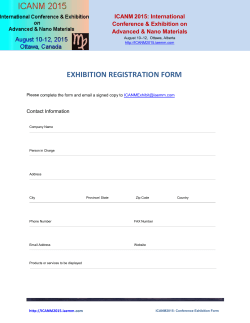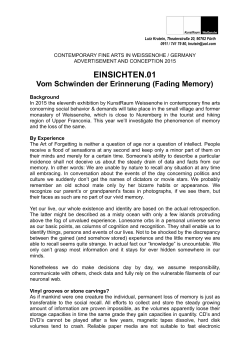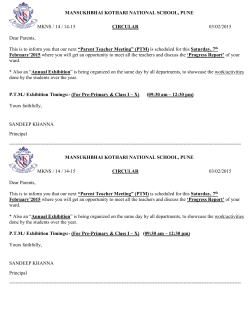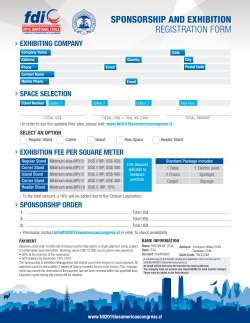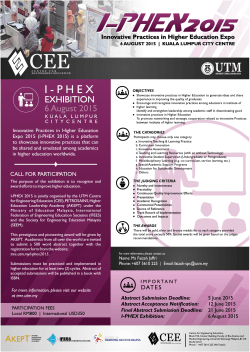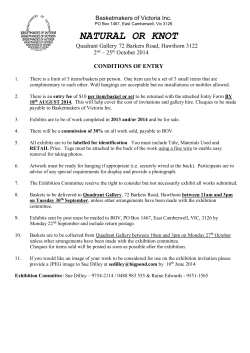
Comunicato Stampa Michelangelo Consani_ENG
Michelangelo Consani Things might change Opening June 11, 2015 June 11 – July 31, 2015 Prometeogallery di Ida Pisani is glad to present “Le cose potrebbero cambiare”, the first solo exhibition by Michelangelo Consani at its premises located in Via Ventura, curated by Matteo Lucchetti. The exhibition is based on the interlace of recent research by the artist who, starting with the recontextualization of existing works, presents a series of new productions that embody the themes of degrowth and of nuclear power in a dialogue comprised of repeated references to the collective imagination and to the many counternarrations contradicting it. Japan is once again the preferred case study in the creation of future scenarios, fruit of the understanding of all the tragic falls of modernity and of public opinion enveloped by an optimistic view of the concept of progress. From the large movie poster designed in Saigon depicting Godzilla, the monster icon of post-Hiroshima and Nagasaki, to the video of the abandoned pigs of Fukushima, passing through the monochromes of contaminated nori seaweed on wood, the Land of the Rising Sun is as much a sunset of humanity to learn from, as a perpetual motion of resilience that continuously shifts the limits of the acceptable. On the background emerges the environmental issue as a political territory where sustainability processes become practices of daily resistance, while existing models remain anchored to unsustainable balances, offspring of the cold war and of its logic. Always interested in the minority perspectives of history and in the individuals who are its protagonists through their work, by selecting this title (“Things could change”) Michelangelo Consani chooses to suspend the exhibition in a state of possibility where change is not necessarily associated with a positive meaning, entrusting to a series of personalities and events the task of pointing out a succession of possible or imaginary turning points that would have yielded a different course of history. Two main and antagonistic poles of the exhibition are embodied by the revolutionary farmer/philosopher Masanobu Fukuoka, a recurring figure in Consani’s work, and by the military engineer at the court of Louis XIV, Sébastien Le Prestre da Vauban. The latter, present in the form of a plaster bust, in addition to having brilliantly served the cause of the fortification of national boundaries in modern times, is the promoter of the Cochonnerie formula – a sort of Fibonacci sequence where the sow takes the place of rabbits and whose much higher growth rate is closely connected to the idea of the exploitation of mass food production with an essentially proto-Enlightenment rationale. Fukuoka, instead, on the opposite side of the spectrum, represented through a hollowed-out Japanese terracotta sculpture, symbolizes an eco-compatible agricultural sustenance model that minimizes the intervention and the work of man, highlighting existing biological processes. Two opposing examples whose contrast reveals a broader contradictory issue comprised of awareness and forgetfulness. The exhibition is entwined with several connections amongst the narrations - real and fictional - developed around the nuclear threat and its current relevance. Hiroshima, Nagasaki, Fukushima, just like the myriad of atolls in the Pacific and the other sites where prometeogallery di Ida Pisani, Via G. Ventura, 3 - 20134 Milano www.prometeogallery.com atomic experiments or incidents took place, are real tragic locations. But they also represent extreme moments of the declining side of the human parabola and of a mental condition of constant paranoia. It is not by chance that in 2015, the Bulletin of Atomic Scientists, the magazine that since 1947 monitors and measures the proximity of the human race to its hypothetical end due to nuclear causes, has set the hands of the clock to three minutes to midnight, a metaphor to remind us that geopolitical instability has today reached one of its most critical moments since the end of World War II. Through his work, Michelangelo Consani tries to recover information from and understand the dynamics of these unstable contemporary landscapes, putting them in communication with many repressed historic memories and other apparently insignificant details of the past, creating visual twists capable of conferring a new perception of the future to any probable discourse on change. Michelangelo Consani (born 1971, Livorno). After participating in various group exhibitions (Artkliazma, Russia; Schunk Glaspalais, The Netherlands; Musée d’Art Contemporain du Val de Marne, France; Center for Contemporary Art, Celje, Slovenia; Cittadellarte - Fondazione Pistoletto, Biella, Italy) in 2010 he received an award as best artist under 40 from EX3 Centre of Contemporary Art in Florence. In the same year he took part in Aichi Triennale curated by Akira Tatehata, Masahiko Haito, Hinako Kasagi, Pier Luigi Tazzi and Jochen Volz in Nagoya, Japan. In 2011 he held solo shows at Munich’s Kunstraum and at CAMeC Pianozero in La Spezia; in 2012 he exhibited at Pecci Museum in Prato and in Milan at an exhibition parallel to Dakar Biennial. In 2013 Lissone Museum invited him for a special project on the occasion of the museum’s opening. Recently a new book about the artist has been published by Kunstverein Milan/Amsterdam/New York, curated by Matteo Lucchetti, entitled “Caspian Depression and a One Straw Revolution”. In 2014 he exhibited at Fondation Donwahi in Abidjan and held three solo exhibitions: in Tokyo at Side 2 Gallery, in Paris, within Glassbox and in Berlin at Zirkumflex. prometeogallery di Ida Pisani, Via G. Ventura, 3 - 20134 Milano www.prometeogallery.com
© Copyright 2025
